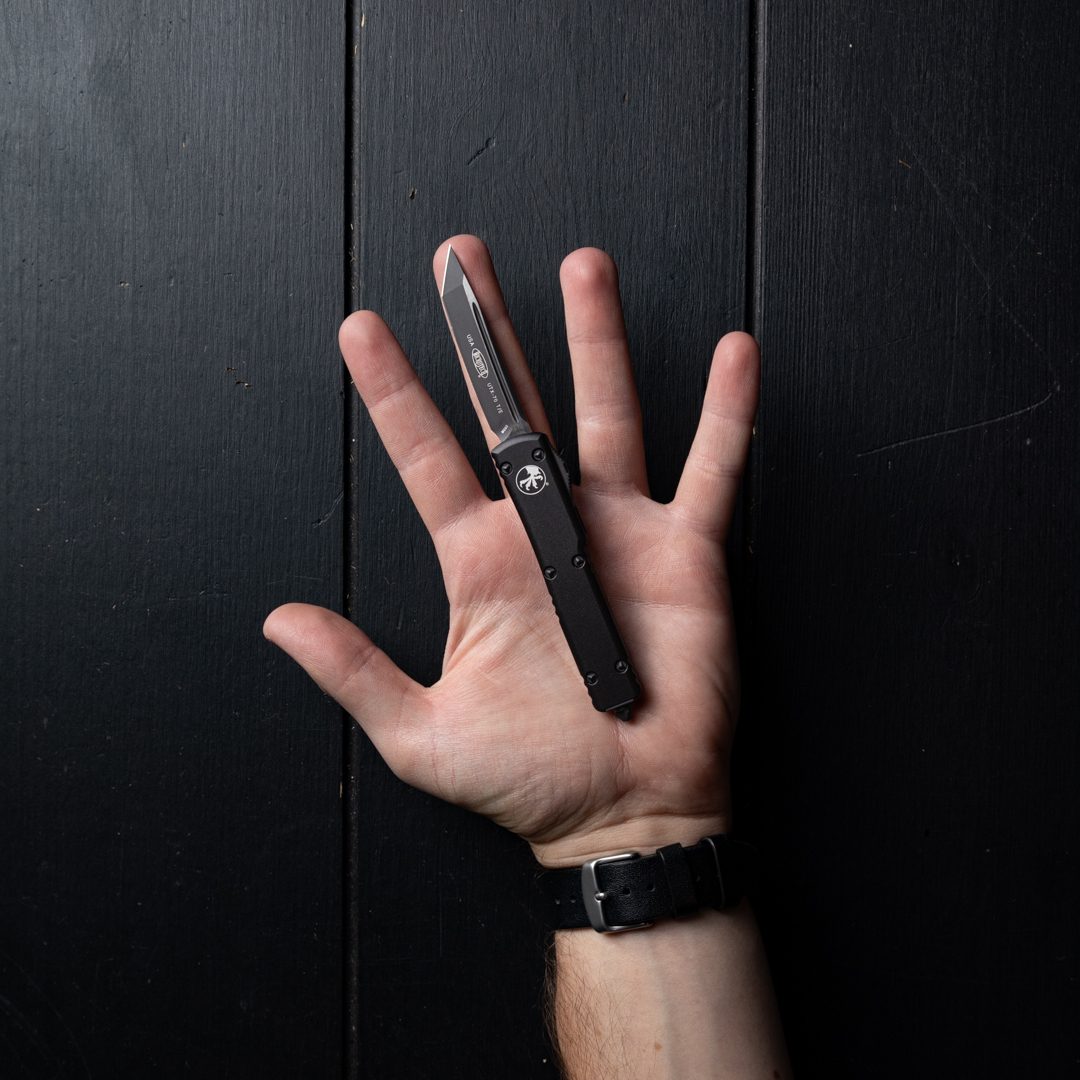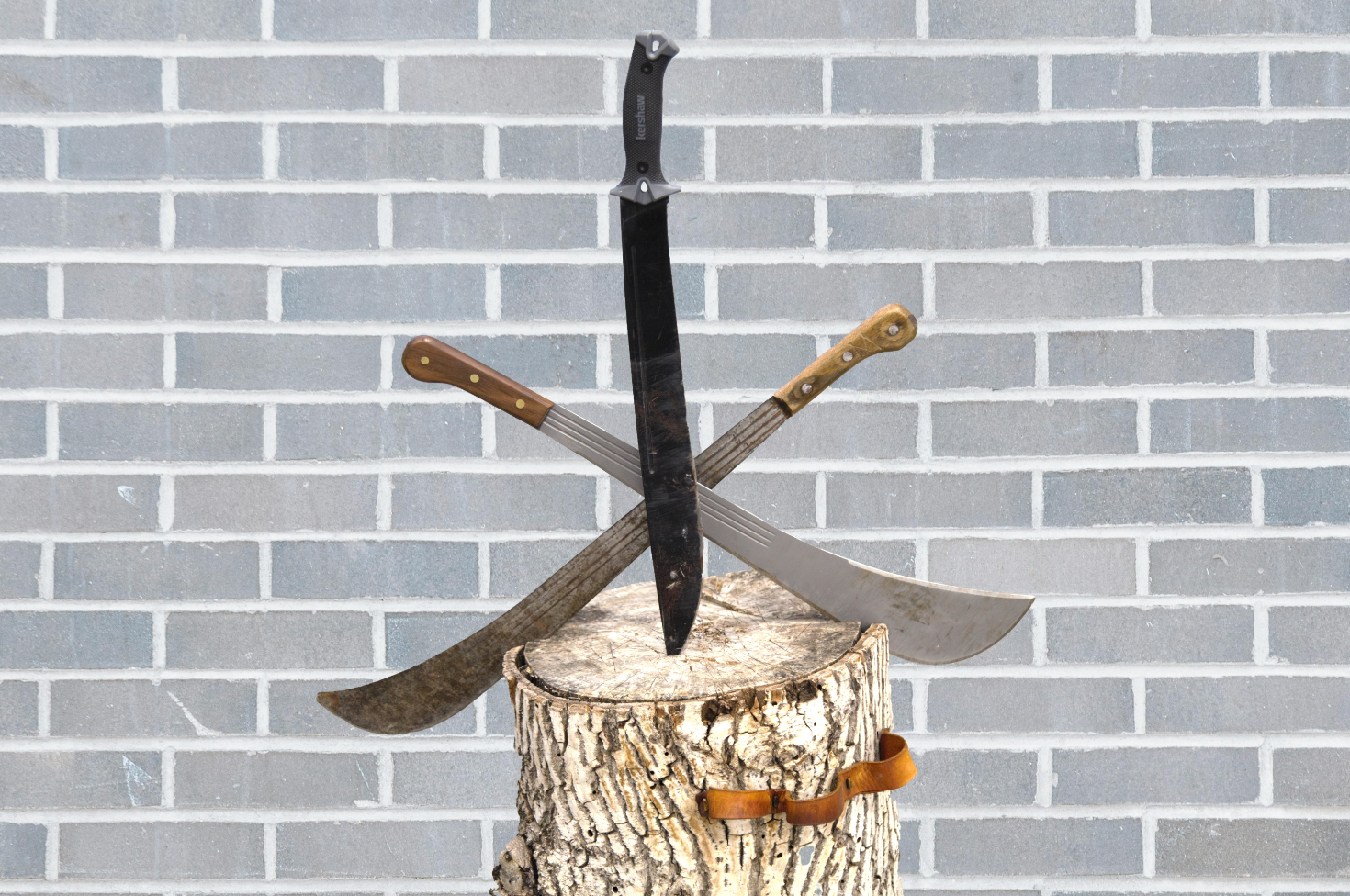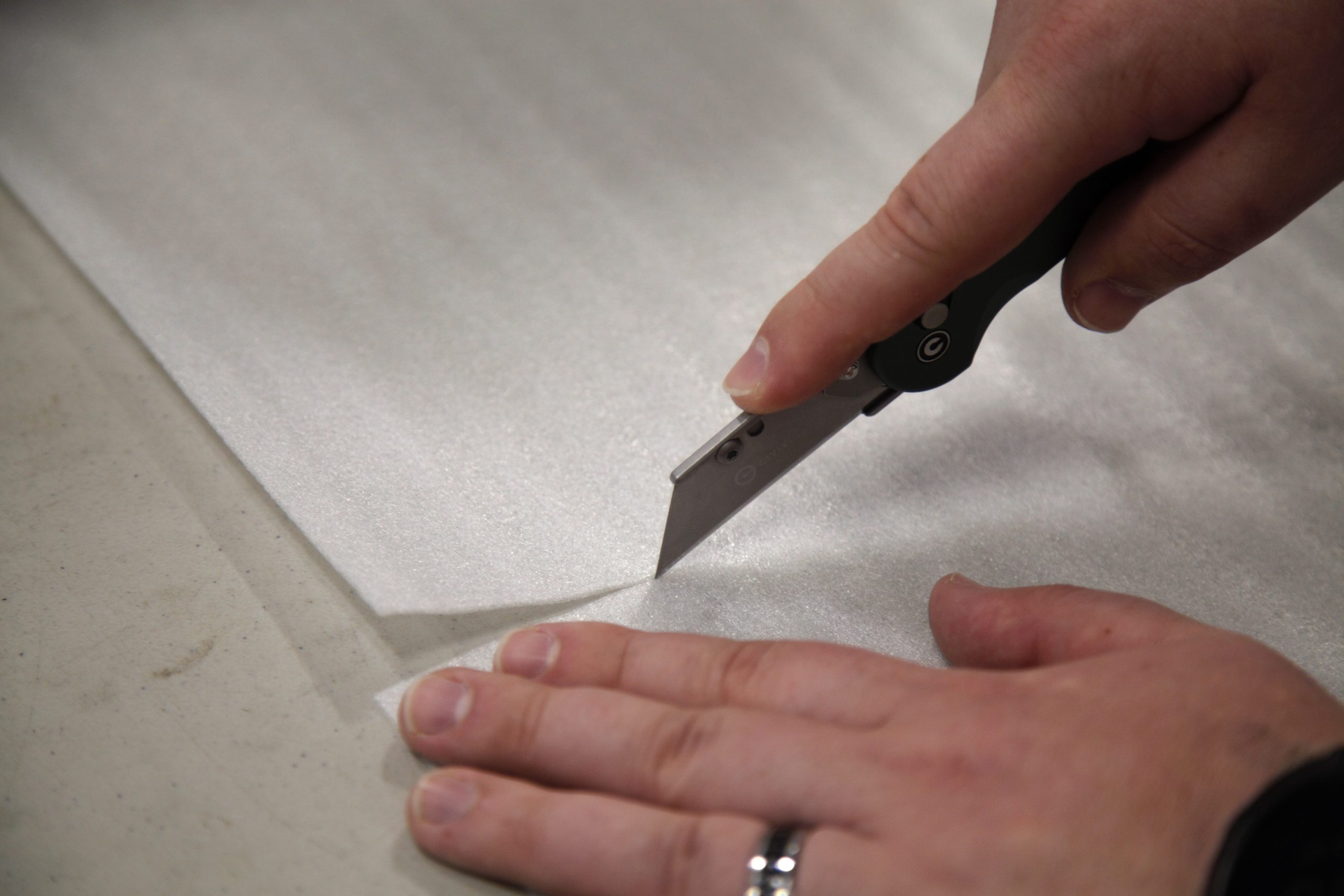
What are OTF Knives?
OTF stands for “Out The Front.” OTF automatic knives are knives whose blades fire automatically out the front of the handle via the slide of a switch. In general, when someone is talking about an OTF knife, they’re talking about a double-action OTF automatic knife—the primary topic of this article.
But there are many other types of OTFs. Check out our guide for the 15 Best OTF Knives (By Category) blog article if you want to learn what types of OTF knives are out there.
Why Should You Want an OTF Automatic Knife?

Double-action OTF automatic knives are my favorite type of pocket knife. They are extremely satisfying to use, require only one hand to use, are complex and interesting, and have a serious ‘wow’ factor.
There’s something endlessly thrilling about loading the internal spring with potential energy as you begin sliding the switch up; then, all at once, you overcome the internal detent, and that energy releases, yanking the blade up by the tang. It shoots out of the end of the chassis, where it engages a lock that secures it in place.
Retracting the blade is as engaging: You pull down the slide, building potential energy until it disengages the lock and tugs the blade back into its housing. You feel the hit of the blade each time you fire and retract it, reminding you of the forces at work inside the tiny feat of ingenuity you carry as an EDC (Everyday Carry) cutting tool.
In summary, OTFs are practical, utilitarian, satisfying, and stimulating.

OTF knives have many uses that can be grouped into two categories: tactical and EDC.
Tactical knives find their homes in the pockets of police/law enforcement officers (LEO), military personnel, and those interested in self-defense. Because OTF automatic knives are designed for rapid one-handed blade deployment for quick access to a point and cutting edge and can be intimidating, they are often chosen as tactical tools.
For EDC, the totally one-handed nature of OTF knives makes it easy to whip out the blade, cut something you’re holding with your non-dominant hand, then retract the blade and pocket the knife. The fun, fidget, and ‘wow’ factors are through the roof. Once you pick one of these bad boys up, you won’t want to put it down.
What to Consider When Buying an OTF?

Blade Play
OTF knives are multi-faceted cutters with many aspects to consider: blade play, sound, reliability, ergonomics, pocket clip, and slide/switch comfort. A nearly unavoidable fault with OTF knives is they have at least a little blade play; due to the complexity of the mechanism and the need for as little friction as possible, reliability comes at the cost of a little bit of wiggle—unless you’re talking about the Hawk Deadlock OTF. If money isn’t an issue and the best is in your sights, pull the trigger on one of these if you can find one. They have zero blade play, satisfying action, and quality that’s off the charts.
Higher-end OTF knives, like those from Microtech and Heretic, will have less blade play, while more budget-friendly OTFs, like those from AKC (Automatic Knife Creations), will have more play. OTF knives can be noisy; high-quality ones will have quieter action, less spring ring after firing the blade, and won’t rattle as much. They will be more consistent, durable, and boast greater longevity, sporting quality materials curated for the very best cutters.
Ergonomics
Think about what shapes are comfortable in your hand, whether you’re looking for something bulkier or more streamlined, and whether you’re after a smaller or larger pocket clip. Do you want a smooth anodized aluminum handle or something more grippy like G-10? Consider the firing switch for double-action OTFs: Do you want something more aggressive that may require a callous to use comfortably but won’t slip? Or do you want a slide that’s less grippy but easier to use and more comfortable?
Blade Shape
Blade shape has a more significant role in choosing an OTF than you might think. The main thing you want to consider is whether you want a double-edged blade, like that on the Benchmade Infidel, or a single-edged blade. A single-edged blade like a drop point, clip point, or spear point is nice because it allows you to press on the blade spine when cutting. This provides additional finger placement options for controlling the blade and guiding the edge precisely where you want it.
Of the single-edged blade styles, I think the tanto shape is the most practical, providing the secondary point near the tip, which makes draw cuts quick and easy. Double-edged options like dagger blades and some bayonet blades add to the knife’s ‘wow’ factor at the cost of some EDC utility. They are uncommon outside OTFs and fixed blades and are especially useful in tactical and self-defense situations.
Whether you get a dagger blade with partially serrated edges or a plain-edged clip point blade, the main thing is that you get what you want, whether you want something cool, EDC-friendly, or tactically useful.
Blade Steel
Knife blade steel is a beast unto itself, and the type of steel you’ll want depends on how you plan to use your OTF. For heavy use and if you’re averse to sharpening, a premium steel with high toughness and edge retentions is what you want. If you’re looking at OTF knives for the novelty of it, a simple budget steel will meet your needs and save you some money. For help deciding the steel type you want, consult our Knife Steel Guide article.
What to Expect from Your First OTF Knife?

Getting your first OTF knife is a thrilling experience, whether you purchased an entry-level OTF or saved up for a premium model. With double-action OTF automatic knives—the most common—there are a few things you should prepare for:
- The blade will come “off track” at some point. This is normal, especially when firing the blade while the knife is in motion or dirty, but it should still be an irregular experience. (WARNING: Do not attempt to knock your blade off track against anything you’re not prepared to cut. The blade “coming off track” is sometimes called a safety feature, but not because it prevents injury but because it lessens the potential severity of one. The blade will cut you if you fire it into your body!) If your OTF misfires repeatedly, we recommend contacting the knife’s manufacturer about its warranty.
- When you fire and retract the blade for the first time, you may be surprised at how difficult it is to push the switch. It gets easier with time as you strengthen your thumb and break in the knife. With more aggressively grippy thumb slides, there may be some initial pain in your thumb following some fidgeting. But fear not! Once that callus develops, you’ll be fidgeting with it all day without discomfort.
OTF Knife Maintenance

To minimize misfires, ensure the blade is clean and dry before retracting it into the handle. When it’s time to lubricate your OTF, use a thin lubricant like Tuf-Glide, included in our Knife Care Kit, or something designed explicitly for OTF knives like Heretic’s OTF Lube.
Using the wrong oil can cause the mechanism of your OTF to gather gunk and reduce its reliability. Often, a good blow from your mouth, or better yet, a compressed air duster, will clear out the dust, lint, and whatever else has made its home inside the chassis of your knife. Make sure to familiarize yourself with the warranty on your OTF: Some manufacturers offer a maintenance and cleaning service.
Legality & Safety

OTFs have a complicated history with the law. It’s a widespread misconception that they are widely illegal in the USA. But outside of the USA and in certain states, there are restrictions. Before purchasing your OTF knife, ensure you’re up to snuff on the automatic switchblade knife laws in your area. Look at this article on switchblade legality for more information. You may also be interested in reading more about automatic knives or switchblade safety tips.
Where to Start

So, now you want an OTF knife, and you’re wondering, “Where to start?” First off, again, I recommend you take a look at our 15 Best OTF Knives (By Category) article. It will give you a solid overview of some excellent OTF knives and provide a rating for each based on these categories:
- Blade Steel: The quality of the blade steel.
- Ergonomics: How comfortable the knife is to hold and use.
- Fit & Finish: The quality of the build and the parts.
- Operation: How practical, comfortable, and easy it is to open and close the knife.
- Lockup: How tight the blade lockup is when the knife is open.
- Affordability: How accessible the item’s price is.

Once you’re done there, or if you’re not interested in that article, I recommend checking out these brands to get started:
- Microtech – The OTF manufacturer.
- Guardian Tactical – Makers of super smooth-action OTFs.
- Kershaw – Producers of the extremely accessible Livewire OTF.
- Heretic – Premium OTFs with no compromises.
- AKC – Solid options on a budget.
- Smith & Wesson – High-value spring-assisted OTFs.




